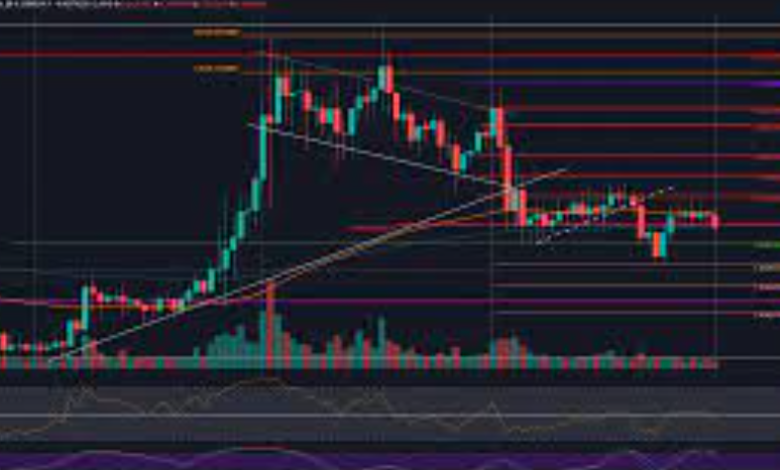The Role of Ripple in XRP Price USD Movements

Ripple, the company behind the cryptocurrency XRP, plays a significant role in the price movements of XRP in the USD market. As one of the most talked-about cryptocurrencies, XRP has gained both praise and criticism over the years. Its price is influenced by various factors, with Ripple’s decisions and technological innovations often having a profound impact on XRP’s valuation against USD, USDT, and other fiat currencies.
In this article, we’ll explore the role of Ripple in shaping the xrp price usdt, examining the factors that drive its movements and how Ripple’s involvement in the cryptocurrency ecosystem impacts the price.
1. Introduction to Ripple and XRP
Ripple is a technology company that focuses on enabling fast and low-cost international money transfers. The company’s native cryptocurrency, XRP, is designed to facilitate payments between different financial institutions. It provides liquidity solutions for cross-border payments, often serving as a bridge between two different fiat currencies.
XRP is unique among cryptocurrencies due to its centralized nature. While Bitcoin and Ethereum are decentralized, Ripple’s network operates with a consensus protocol that doesn’t require mining. This has led to some debate over the decentralization of XRP, but it also allows for faster transaction processing and greater scalability, which contributes to its attractiveness as a payment solution for financial institutions.
2. The Ripple Network and Its Impact on XRP Price
The Ripple network is based on a protocol called XRP Ledger (XRPL), which enables quick and secure transactions. Ripple aims to streamline the process of sending money across borders, which typically involves high fees and slow processing times. Through the XRP Ledger, Ripple facilitates real-time payments, lowering costs for financial institutions and businesses.
As Ripple continues to attract financial institutions to adopt its technology, demand for XRP increases. More transactions on the Ripple network result in higher utilization of XRP, directly influencing its price in USD. When the demand for Ripple’s payment solutions grows, the need for XRP rises, driving up its price in the market.
3. Ripple’s Business Model: Bridging Traditional Finance with Cryptocurrencies
Ripple’s business model focuses on the integration of blockchain technology with the traditional financial system. The company collaborates with banks, remittance providers, and financial institutions to enable quicker and more efficient cross-border payments. By acting as an intermediary, XRP facilitates currency conversion and liquidity.
Ripple’s unique approach to the digital asset market has set it apart from many other cryptocurrencies, which aim for full decentralization. This model of bridging the gap between cryptocurrency and traditional finance is a significant factor that influences XRP price movements, especially against fiat currencies like the US Dollar.
4. The Legal Battle and Its Effect on XRP’s Value
One of the most significant events that has impacted the price of XRP is the ongoing legal battle between Ripple Labs and the U.S. Securities and Exchange Commission (SEC). The SEC claims that XRP is a security and should be regulated as such, while Ripple argues that XRP is a digital currency. This legal uncertainty has caused considerable volatility in the price of XRP, with fluctuations in response to legal developments.
The resolution of this case could have a profound effect on the future of XRP. A ruling in Ripple’s favor would likely boost the price of XRP in USD, as it would clear up regulatory ambiguity and open the door for institutional investments. Conversely, a ruling against Ripple could lead to a decline in the price of XRP as it would face increased regulatory scrutiny and potentially lose its appeal as a financial asset.
5. Partnerships and Ripple’s Influence on XRP’s Market Movement
Ripple has established partnerships with numerous financial institutions, including Santander, PNC, and American Express, to name a few. These partnerships are vital in driving the demand for XRP, as they require the use of XRP for facilitating cross-border payments. As the Ripple network continues to gain adoption, more financial institutions may follow suit, leading to an increase in XRP’s value in USD.
When Ripple announces new partnerships or integrations with major banks and payment providers, the price of XRP typically rises. This is because these partnerships signify growing trust in Ripple’s technology and its ability to solve real-world payment problems. As demand for Ripple’s solutions grows, so does the demand for XRP, leading to upward price movements in the market.
6. XRP’s Liquidity: Key to Price Stability
Liquidity is a crucial factor in determining the stability and price movement of any cryptocurrency. XRP benefits from high liquidity due to its widespread adoption and use in the payment industry. This liquidity helps maintain a relatively stable price, even in volatile market conditions.
In the USD market, XRP’s liquidity allows for smoother transactions and more predictable price movements. For instance, when XRP is traded in large volumes, it can absorb market fluctuations without experiencing extreme price swings. This stability makes XRP an attractive asset for traders and investors, which, in turn, influences its price movements in USD and USDT.
7. XRP in the Global Remittance Market
XRP’s primary use case lies in the global remittance market. With millions of people sending money across borders every year, the need for an efficient, low-cost solution is evident. Ripple aims to address this need by using XRP to facilitate fast and affordable remittances.
The demand for Ripple’s services in the remittance market directly impacts the price of XRP. As more people and businesses use XRP for cross-border transactions, the price tends to rise. The remittance sector is one of the largest contributors to XRP’s adoption, making it an essential factor in the cryptocurrency’s price movements against USD.
8. The Role of XRP in Digital Asset Trading Platforms
XRP is listed on a wide range of cryptocurrency exchanges and trading platforms, making it highly accessible to retail investors. As one of the most widely traded cryptocurrencies, XRP has a significant presence in the global digital asset market. The increased trading volume and investor participation on platforms such as Binance and Coinbase contribute to its price movements.
The availability of XRP on these platforms ensures that it remains liquid and easily tradable. Price fluctuations often occur in response to changes in market demand, investor sentiment, and overall trading activity. As such, Ripple’s role in ensuring XRP’s widespread availability across exchanges is a key factor in its market price.
9. Ripple’s Marketing and Strategic Efforts to Boost XRP
Ripple invests heavily in marketing and strategic partnerships to increase the adoption of XRP. The company’s marketing efforts focus on educating businesses and financial institutions about the benefits of using Ripple’s technology. As more organizations recognize the advantages of adopting Ripple, the demand for XRP increases, driving its price higher.
Ripple’s strategic moves to form alliances with key industry players, as well as its investments in blockchain and fintech startups, contribute to building confidence in XRP. These efforts are essential in maintaining XRP’s long-term price stability and growth.
10. XRP Price Movements and USDT (Tether) Market Impact
Tether (USDT) is a stablecoin pegged to the US Dollar, and it often plays a significant role in the price movements of XRP. Traders often use USDT to hedge against volatility in the cryptocurrency market. When the price of XRP experiences a significant drop or rise, investors may use USDT to protect their holdings or capitalize on short-term market fluctuations.
The interaction between XRP and USDT can have a stabilizing effect on XRP’s price. USDT provides a safe haven for investors looking to mitigate risk, while also enabling more seamless trading between XRP and other cryptocurrencies. Thus, movements in the USDT market can have a direct influence on XRP’s value in USD.
11. Ripple’s Influence on Market Sentiment and Investor Behavior
Ripple’s actions and developments often play a significant role in shaping market sentiment around XRP. Positive news, such as successful partnerships or regulatory breakthroughs, can generate optimism among investors, leading to increased demand and price appreciation. Conversely, negative news, such as delays in product launches or legal setbacks, can result in a decline in market sentiment and price drops.
Investor behavior is strongly influenced by Ripple’s communications and activities. The company’s transparency and the ongoing legal developments in the U.S. also shape how investors perceive XRP’s potential as a long-term investment.
12. XRP’s Volatility and Market Speculation
As with many cryptocurrencies, XRP is prone to periods of high volatility. These price swings often attract speculative traders looking to capitalize on short-term market movements. XRP’s volatility is both a risk and an opportunity for investors, with traders attempting to predict price movements and make profits based on their predictions.
Ripple’s role in managing the volatility of XRP through strategic announcements and market interventions helps stabilize the cryptocurrency, but the speculative nature of the market can still lead to price fluctuations.
13. Regulatory Changes and Their Impact on XRP Price Movements
Regulatory changes are a major factor that can influence the price of XRP. Since Ripple is based in the U.S., the regulatory environment surrounding cryptocurrencies in the U.S. has a direct impact on XRP. The ongoing legal battle with the SEC is a prime example of how regulatory uncertainty can create price volatility.
Changes in global cryptocurrency regulations also affect XRP. Countries that adopt favorable regulations for digital assets typically see an increase in investment in cryptocurrencies like XRP, while countries that impose harsh regulations can lead to market declines.
14. XRP Price Forecast: Factors to Watch
Looking ahead, several factors could influence the future price of XRP. Key drivers include the outcome of Ripple’s legal battle with the SEC, the growth of the global remittance market, increasing partnerships with financial institutions, and the overall adoption of blockchain technology in traditional finance.
Understanding these factors can help investors predict future price trends for XRP. However, as with all cryptocurrencies, market unpredictability and external influences can make accurate forecasts challenging.
15. Conclusion
Ripple plays a pivotal role in the price movements of XRP in USD. The company’s technology, partnerships, legal situation, and market sentiment all contribute to the fluctuations in XRP’s value. While Ripple’s centralized approach sets it apart from other cryptocurrencies, it also makes XRP a unique asset in the world of digital currencies.
As Ripple continues to expand its network and increase the adoption of XRP, the price of XRP in USD and other fiat currencies will likely experience further growth. However, investors must remain aware of the risks, including regulatory uncertainty and market volatility, which can impact the price of XRP in unpredictable ways.
16. Frequently Asked Questions
1. What is Ripple’s impact on the XRP price?
Ripple’s technology and strategic partnerships influence XRP’s price movements. As Ripple continues to expand its network and gain adoption from financial institutions, demand for XRP increases, driving up its value.
2. How does Ripple’s legal battle affect XRP?
Ripple’s ongoing legal battle with the SEC has caused price volatility for XRP. The outcome of the case will have a significant impact on the future of XRP, as regulatory clarity could either boost or diminish its value.
3. Does XRP have any real-world use cases?
Yes, XRP is primarily used for cross-border payments and remittances, making it an attractive solution for banks and financial institutions seeking lower costs and faster transaction speeds.
4. Why is XRP’s liquidity important for price stability?
High liquidity ensures that XRP can absorb large volumes of transactions without causing drastic price swings. It helps maintain a more stable price, even during periods of market volatility.
5. How do partnerships affect XRP’s price?
Partnerships with major banks and financial institutions lead to increased demand for XRP, as it is required to facilitate cross-border transactions. This increased adoption tends to push up the price of XRP.
6. What role does USDT play in XRP price movements?
USDT, a stablecoin pegged to the USD, is often used to hedge against volatility in the crypto market. Movements in the USDT market can influence XRP’s price, especially when liquidity and investor sentiment shift.



